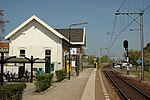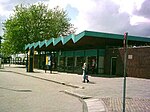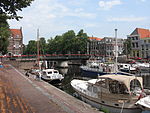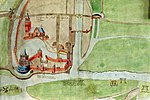Hoogblokland
Former municipalities of South HollandMolenlandenPopulated places in South HollandSouth Holland geography stubs

Hoogblokland is a village in the Dutch province of South Holland. It is a part of the municipality of Molenlanden, and lies about 4 km north of Gorinchem. In 2001, the village of Hoogblokland had 935 inhabitants. The built-up area of the village was 0.25 km², and contained 372 residences. The statistical area "Hoogblokland", which also can include the peripheral parts of the village, as well as the surrounding countryside, has a population of around 1100.Hoogblokland was a separate municipality until 1986, when it became a part of Giessenlanden.
Excerpt from the Wikipedia article Hoogblokland (License: CC BY-SA 3.0, Authors, Images).Hoogblokland
Vlietskade, Molenlanden
Geographical coordinates (GPS) Address Nearby Places Show on map
Geographical coordinates (GPS)
| Latitude | Longitude |
|---|---|
| N 51.866666666667 ° | E 4.9833333333333 ° |
Address
Vlietskade 1068
4241 WC Molenlanden (Gorinchem)
South Holland, Netherlands
Open on Google Maps









